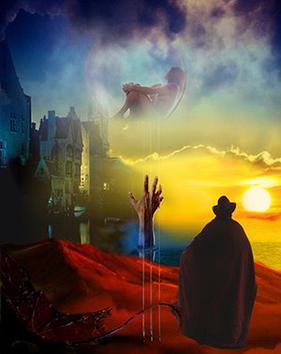Mas-surrealism is a portmanteau word coined in 1992 by American artist James Seehafer, who described a trend among some postmodern artists that mix the aesthetic styles and themes of surrealism and mass media—including pop art.
Mas-surrealism is a development of surrealism that emphasizes the effect of technology and mass media on contemporary surrealist imagery.James Seehafer who is credited with coining the term in 1992 said that he was prompted to do so because there was no extant definition to accurately characterize the type of work he was doing, which combined elements of surrealism and mass media, the latter consisting of technology and pop art—"a form of technology art." He had begun his work by using a shopping cart, which "represented American mass-consumerism that fuels mass-media", and then incorporated collages of colour photocopies and spray paint with the artist's traditional medium of oil paint.
In 1995, he assembled a small group show near New York and found a local cyber-cafe, where he started to post material about massurrealism on internet arts news groups, inspiring some German art students to stage a massurrealist show. The next year he started his own web site, www.massurrealism.com and began to receive work from other artists, both mixed media and digitally-generated, "which is massurrealism because of its origins in strict electronics".He credits the World Wide Web with a major role in communicating massurrealism,which spread interest from artists in Los Angeles, Mexico and then Europe.
Ginnie Gardiner, Cecil Touchon, F. Michael Morris and Alan King are mas-surrealist artists.
"The Brick Room" by Alan King
"Die Tote Stade" by Melanie Marie


No comments:
Post a Comment